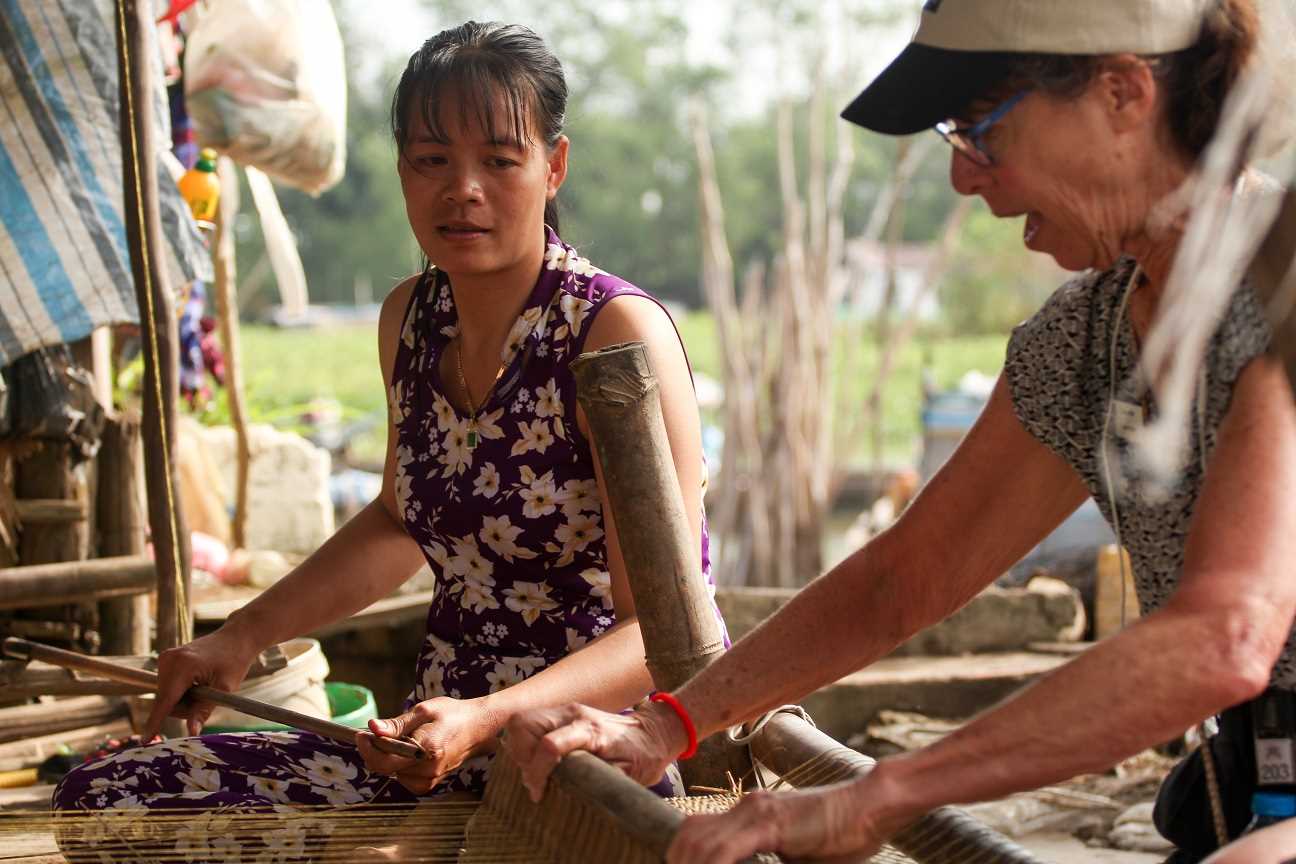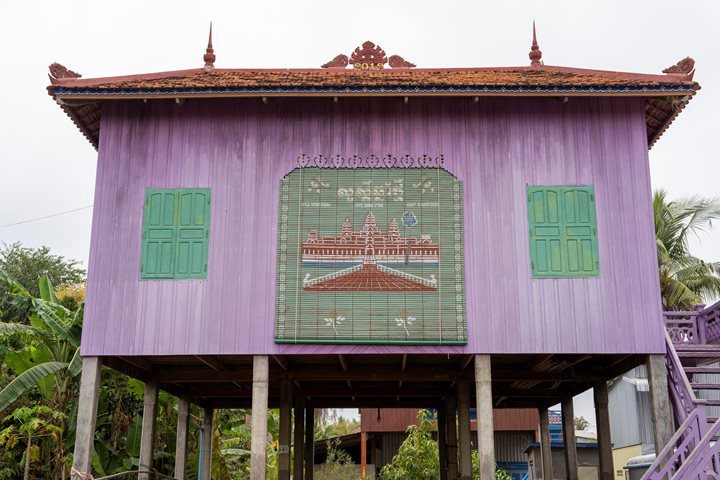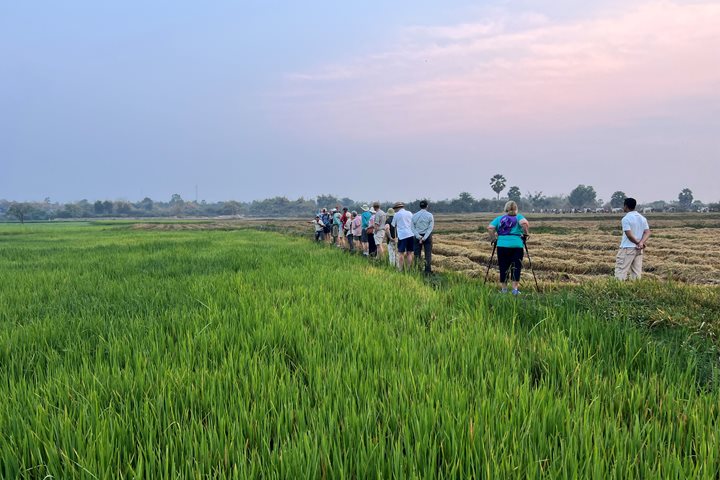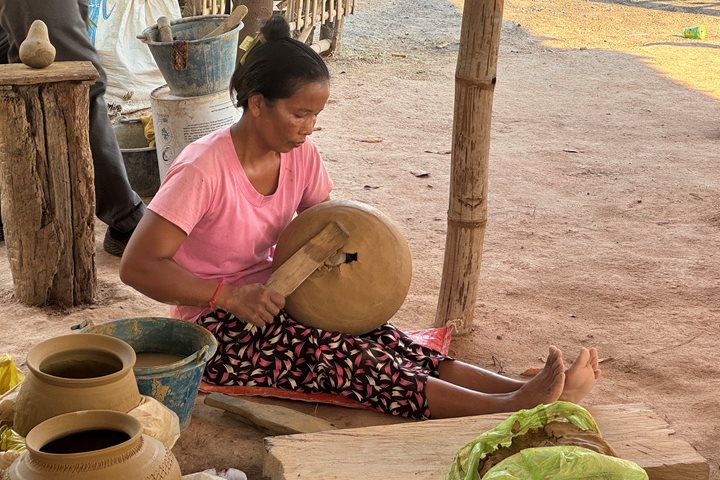Our final day aboard Jahan brings us to the lower Mekong delta, where much of Vietnam’s rice is grown. It is also home to some of the country’s largest cities, and as we cruise along the river we notice the steadily increasing presence of urban areas and river traffic. Our final Tai Chi class is held on the upper deck, and the final steps require our utmost balance and coordination as we “open up our wings”.
We board the local boats and make the short journey to Binh Tanh island, home to a village of mat weavers. A type of reed grass grows along the muddy banks of the island, from which the stems are collected and processed to provide the raw materials for mat production. The weavers work in pairs – one on the loom, the other feeding in the strands. And while they make it look easy, we quickly learn that the process of quickly feeding the loom is a highly refined art. We also see some baskets made of water hyacinth. While we walk through the village we encounter a full range of fruit trees growing amongst the brick and concrete houses. The concrete roads are narrow with an intermittent stream of motor scooters buzzing through. We also learn that recently frog farming has also proven a lucrative cottage industry and allowed some families to renovate or rebuild their houses.
In the afternoon we board the local boats to visit Cai Be, another populous district of the delta. We visit a family run business who use rice and coconut to make snack foods. Rice flour is mixed with water and cooked to make rice paper which can be used to wrap spring rolls or even candy. Cooked rice can be fermented in water and distilled to make a potent 80 proof whisky. Rice can also be heated in a large pan to make “pop rice”, which makes a delicious crispy snack when mixed with other flavours. Finally, the white flesh of the coconut can be scraped out and pressed to extract the oily milk. This can be boiled down to form a thick caramel like molasses, which is then kneaded and rolled into strips before being cut into individual lollies. This family enterprise shows the great versatility of two basic staple foods.







